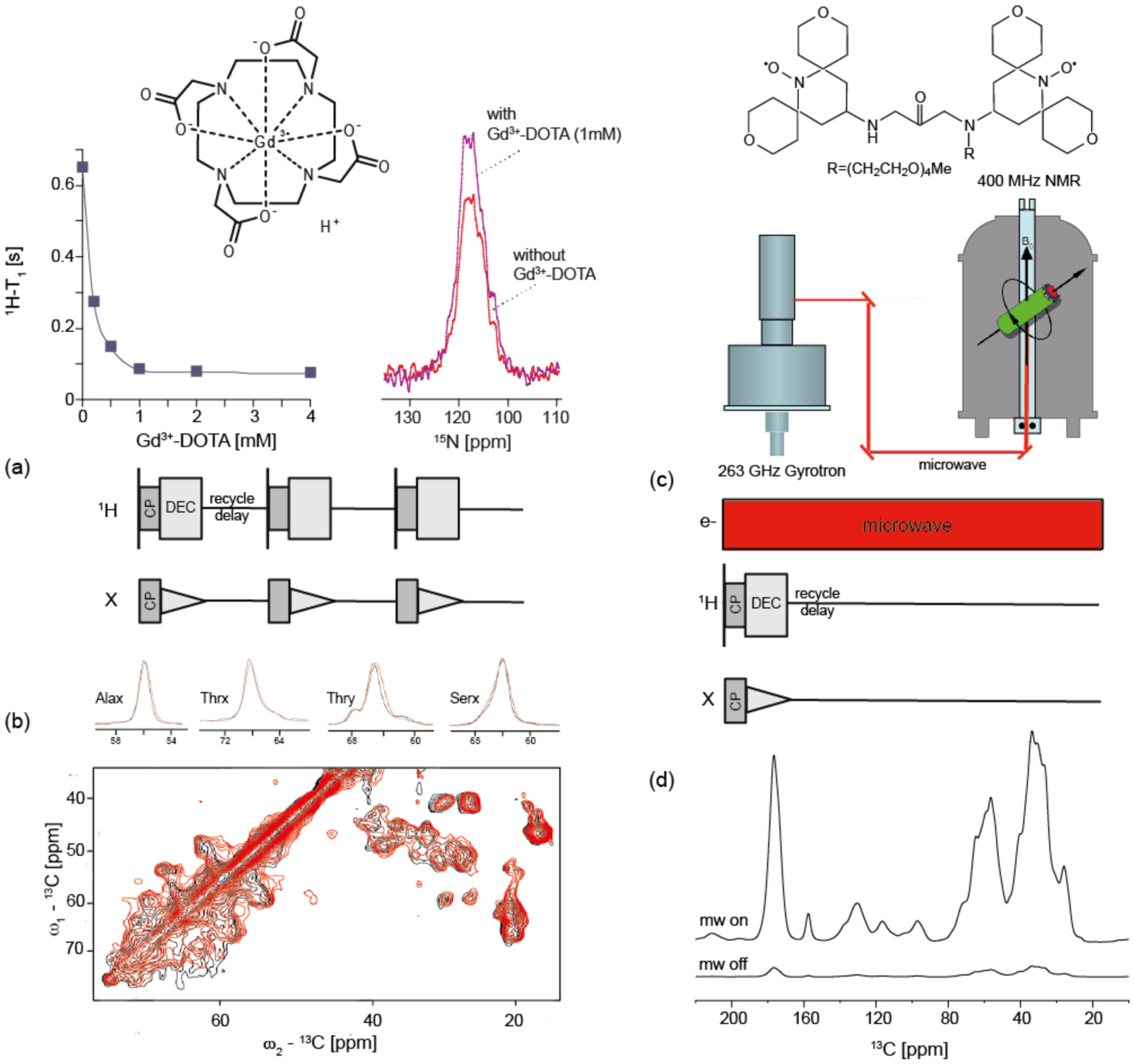Figure 6.

Approaches to improve the detection sensitivity for MAS-NMR on MsbA. (a) Sample doping with Gd3+-DOTA reduces the averaged amide 1H-T1 in 15N-MsbA significantly. In presence of 1 mM Gd3+-DOTA, 1H-T1 was reduced by almost 90%. A comparison of 15N-CP MAS spectra of dia- and paramagnetic MsbA samples recorded each with a recycle delay of 1 s shows a 20%-fold better SNR upon doping. (b) Superposition of 13C-13C PDSD spectra of diamagnetic (black) and paramagnetic (red) MsbA samples recorded with recycle delays of 3 and 1 sec, respectively. The number of scans and the amount of sample was the same in both spectra. The spectrum of the doped sample was recorded three times faster. Cross sections along ω2 for Cα-Cβ cross peaks show no doping induced line broadening and no relevant peak shifts. (c) Basic setup for dynamic nuclear polarisation (DNP). Samples are doped with suitable biradicals such as AmuPOL. NMR experiments are conducted under continuous microwave irradiation resulting in a large sensitivity enhancement. (d) 1D 13C-CP spectra of MsbA with and without microwave irradiation demonstrate a 20-fold signal increase.
